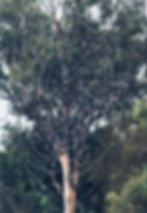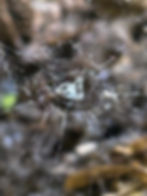Shobha Srinivasan
Children's Book Author

Spider Silk: Stronger Than Steel, Woven with Genius
Feb 3
6 min read
0
17
0

A spider's web is an intricate trap woven from silk. The spider first creates a framework of non-sticky threads, then adds a spiral of sticky silk designed to ensnare insects. Typically, the spider waits at the web's center, feeling for vibrations that signal a captured meal. Using spinnerets on its abdomen, the spider produces different types of silk to build various web designs, depending on its species.
Spider silk is liquid protein produced in their abdomen. This hardens into threads as it's forced out through the spinnerets. Most spider webs have a radial framework of non-sticky threads radiating from a central hub, overlaid with a spiral of sticky threads for catching prey. When an insect blunders into the sticky spiral, it's trapped, and the vibrations alert the spider. Web designs vary greatly depending on the spider species, ranging from the familiar circular orb webs to flat sheet webs and tube-like funnel webs. Spiders avoid getting stuck in their own webs by using specialized leg hairs and navigating along specific non-sticky pathways.
How a Spider Builds a Web (A Comedy in Three Acts)
Act I: "Where's My Glue Gun?"
Our eight-legged hero, Spidey, stands poised, a tiny silk factory ready for action. He shoots out a strand of web, hoping the wind will be his interior decorator. Will it land on a sturdy branch? A juicy fly's nose? It's a gamble, folks. A sticky, silken gamble.
Act II: "Geometric Shenanigans"
Okay, the anchor stuck (miraculously). Now Spidey gets all architectural. He reinforces that first thread like he's building a suspension bridge for ants. Then, BAM - radial lines shoot out like he's trying to create a tiny, sticky sun. It's all very impressive, if you ignore the fact he's probably just winging it.
Act III: "Sticky Situation"
Time for the pièce de résistance – the spiral! Spidey, channeling his inner artist (and possibly a drunken snail), lays down a sticky spiral, starting from the outside and working his way in. It's like he's gift-wrapping the air for unsuspecting insects. And, in a move that would make any minimalist proud, he often tears down the non-sticky spiral he made earlier. Because, apparently, that was just a rough draft. Web design is a fickle business, you know.
Let's take a look at how some Aussie spiders build their webs:

Orb webs, like that of the Golden Orb spider, are highly effective traps for flying insects. Their design offers a large, nearly invisible capture area, making them difficult for insects to detect and avoid, particularly at night. Dew-covered webs are an exception, becoming clearly visible. The construction of orb webs is efficient, requiring minimal silk and time. While some orb webs, like those of Nephila spiders, are semi-permanent and repaired, many nocturnal orb weavers, such as Eriophora, consume and rebuild their webs nightly. This silk recycling process is crucial, as it allows the spider to reuse the silk protein for new web construction.

An orb weaver typically takes 30 to 45 minutes to build its web. The process begins with the spider releasing a silk thread (using its spinnerets) that air currents carry across a gap, attaching to nearby foliage or twigs. The spider reinforces this "bridge line" by adding more silk as it travels back and forth. From the bridge line's center, it drops a vertical thread to the ground, creating a Y-shaped foundation. The spider then adds outer frame lines and radial lines, forming the web's "spokes." A temporary, non-sticky spiral is laid first, moving outward from the center. This spiral acts as a scaffold for the spider to then create the permanent, sticky spiral, working inward from the edge to the center. As the sticky spiral is constructed, the spider removes and consumes the temporary spiral, recycling the silk.
Juvenile webs: St Andrew's Cross Spider
Baby St Andrew's Cross Spiders create a unique silk design, unlike the diagonal cross of mature spiders. They spin a small orb web with a circular, lace-like pattern of zig-zag silk in the center, where they sit. This pattern likely attracts small insects and, more importantly, provides excellent defense. When threatened, the spider quickly disappears by slipping through the web's spiral to the opposite side of the silk design. This central, lace-like pattern is also found in both young and adult Argiope trifasciata spiders, (banded garden spider) a common species found across much of Australia and the western Pacific.

Several different spider species, unrelated to one another, employ a single-line web strategy for catching prey. These webs can be strung horizontally or at an angle.
One example is Phoroncidia sp. (Family Theridiidae). They are a small cob-web spider in the Theridiidae family. Also known as mushroom comb-footed spiders.
These small spiders inhabit low vegetation, bark, and leaf litter. They create a short, simple line of sticky droplets stretched across an open space. The spider then waits, holding the line with a front leg. Small insects, particularly flies, become ensnared when they either collide with the sticky line or attempt to land on it (some flies even rest suspended from non-sticky spider silk).
Ranguma spiders, a type of cribellate spider, construct a unique, single-line web. These stick-like spiders maintain tension on their single, woolly silk line by drawing any slack into a loop held beneath their bodies. Upon detecting an insect's impact with the woolly cribellate silk, the spider releases this loop. The released silk then whips along the line, further entangling the captured prey.

Bolas spiders, descendants of orb-web weavers, have evolved a fascinating and unique hunting strategy by drastically altering their web. These nocturnal hunters prey exclusively on male moths. Instead of building a traditional web, the bolas spider creates a short, single, vertical silk line tipped with a large, sticky globule—the "bolas." This line hangs below the spider, resembling a fishing line, earning it the alternative names "Angling" or "Fishing Spider."
The spider perches, patiently waiting, while emitting an airborne pheromone that mimics the scent of female moths. This irresistible lure attracts male moths. As a moth approaches, drawn by the false signal, the spider detects the vibrations of its wings with specialized, sensitive hairs. The hunt begins. The spider swings the sticky bolas in a circle, aiming to ensnare the approaching moth. Upon impact, the moth is captured by the adhesive silk. The bolas contains a reserve of coiled silk that allows the spider to "play" the moth, preventing the line from snapping as the moth struggles. Finally, the spider reels in its prey, delivering a fatal bite before consuming its meal.
This ingenious bolas line represents a highly specialized, reduced remnant of the ancestral orb web.

Funnel-web spiders create silk-lined burrows with distinctive funnel-shaped entrances. These burrows, often located in cool, moist, and shaded areas like under rocks, logs, or within tree trunks, are relatively shallow, rarely exceeding 30cm in depth. The entrance itself features a funnel leading into a collapsed tunnel-like structure within the burrow. Radiating outwards from the entrance are irregular trip-lines that the spider uses to detect prey. These spiders, primarily nocturnal hunters, position themselves just inside the burrow entrance with their front legs on these trip-lines. They rely on sensing vibrations to alert them to the presence of prey crossing the lines, at which point they quickly emerge to capture their meal.

Redback spiders construct messy, tangled webs from fine, strong silk, designed for efficient prey capture. The web features a funnel-shaped retreat area, typically located in a dry, sheltered spot. Below the retreat, vertical, sticky threads extend to ground attachments, acting as trip wires. Horizontal "guy lines" further contribute to prey capture; these strands help subdue struggling prey, and when they break, the vertical threads pull the captured animal up towards the waiting spider.
Daddy long legs spiders construct messy, three-dimensional webs from strong, flexible silk, opting for maintenance and expansion over regular reconstruction. These non-sticky webs rely on their irregular structure to ensnare prey, which the spiders then haul in using their long legs. The webs serve dual purposes, providing hunting grounds and protection, including the safe attachment of egg sacs. After capture, the prey is wrapped in a silk-like material before the spider delivers a fatal bite. Interestingly, these spiders are also known to invade other spiders' webs, consuming both the resident spider and its captured prey.
Australian spiders are a diverse bunch, each with their own unique way of building webs. From the intricate orb webs of the garden orb weaver to the messy tangle webs of the redback, these eight-legged creatures are masters of silk engineering.
So, next time you see a spider web, take a moment to appreciate the craftsmanship that went into it. Just don't get too close and let spiders be; after all, their webs are nature's pest control.
Source : Australian Museum
Photos courtesy Nivi Das
Thank you for visiting and reading - On the main page of shobhasrinivasan.com, check out the book 'What Aussie animal is that in a tree' for some more interesting facts of animals in trees - and spiders!







